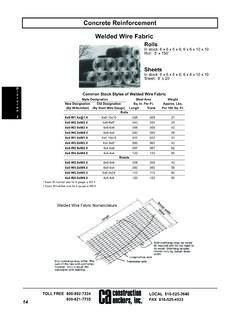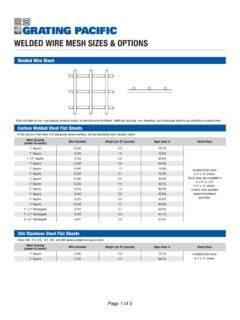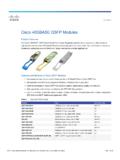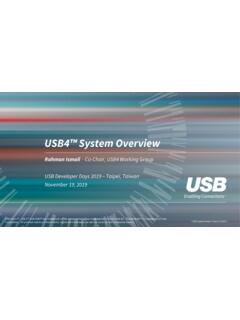Transcription of ATP 3-21.90 MCTP 3-01D TACTICAL EMPLOYMENT OF …
1 ATP MCTP 3-01D TACTICAL EMPLOYMENT OF MORTARS October 2019 DISTRIBUTION RESTRICTION: Approved for public release; distribution is unlimited. This publication supersedes ATTP , dated 4 April 2011. HEADQUARTERS, DEPARTMENT OF THE ARMY HEADQUARTERS, UNITED STATES MARINE CORPS Foreword This publication has been prepared under our direction for use by our respective commands and other commands as appropriate. GARY M. BRITO Major General, Army Commanding General Maneuver Center of Excellence W. F. MULLEN III Major General, Marine Corps Commanding General Training and Education Command This publication is available at the Army Publishing Directorate site ( ) and the Central Army Registry site ( ). It is also available at the Marine Corps Doctrine site ( )*ATP *MCTP 3-01 DDISTRIBUTION RESTRICTION: Approved for public release; distribution is unlimited. *This publication supersedes ATTP , dated 4 April Techniques Publication No.
2 Headquarters Department of the Army Washington, DC, 09 October 2019 Marine Corps TACTICAL Publication No. 3-01D Marine Corps Combat Development Command Quantico, VA TACTICAL EMPLOYMENT of Mortars Contents Page ixINTRODUCTION .. xiChapter 1 ORGANIZATION .. 1-1 Section I Mortar Element Capabilities .. 1-1 Purpose of Indirect Fire .. 1-2 Role of Mortar Elements .. 1-5 Section II Mortar Element Composition and Equipment .. 1-5 Mortar Weapon Systems .. 1-5 Mortar Fire Direction Systems .. 1-8 Mortar Unit Organization .. 1- 13 Battalion Mortar Platoon Leadership .. 1-20 Company and Troop Mortar Section Leadership .. 1- 24 Chapter 2 FIRE SUPPORT OPERATIONS .. 2-1 Section I Battalion and Company Fire Support Operations .. 2-1 Army Organizations .. 2-1 United States Marine Corps Organization .. 2-2 Section II Mission Command .. 2-2 Key Personnel Responsibilities .. 2-2 Control .. 2-4 Section III Fire Support Planning.
3 2-6 Priority of Fires .. 2-7 Command Relationships .. 2-8 Support Relationships .. 2-9 Section IV Graphic Control Measures .. 2- 13 Maneuver Control Measures .. 2- 14 Fire Support Coordination Measures .. 2-14 Targets and Targeting .. 2- 18 Section V Battalion Fire Support Plan .. 2- 23 Contents ii ATP 3-01D 09 October 2019 Target Refinement .. 2- 25 TACTICAL and Technical Triggers .. 2- 26 Ceasing or Shifting Fires .. 2- 27 Clearance of Fires .. 2- 27 Operation Order .. 2- 27 Echelonment of Fires and Risk Estimate Distance .. 2- 31 Risk-Estimate Distance .. 2- 32 Chapter 3 MORTAR UNITS IN OPERATIONS .. 3-1 Section I Unified Action .. 3-1 Operational Environment .. 3-1 Threats and 3-3 Section II Unified Land Operations .. 3-4 Principles and Tenets of Unified Land Operations .. 3-4 Operations Structure .. 3-4 Section III Decisive Action .. 3-5 Offensive Operations .. 3-6 Defensive 3-6 Stability Operations.
4 3-6 Section IV Offensive Operations .. 3-6 Movement to Contact .. 3-7 Attack .. 3-8 Exploitation .. 3- 10 Pursuit .. 3- 10 Mortar Support in the Offense .. 3- 11 Fires .. 3- 11 Section V Defensive Operations .. 3- 12 Area Defense .. 3- 13 Mobile Defense .. 3- 13 Retrograde .. 3- 14 Mortar Support in the Defense .. 3- 15 Fires .. 3- 16 Section VI Stability Operations Tasks .. 3- 19 Decentralized Operations .. 3- 19 Components .. 3- 19 Preparation for Stability Operations Tasks .. 3- 21 Nonstandard Missions .. 3- 21 Section VII TACTICAL -Enabling Operations .. 3- 21 Reconnaissance .. 3- 21 Security .. 3- 22 Troop Movement .. 3- 22 Passage of Lines .. 3- 25 Relief in Place .. 3- 25 Encirclement Operations .. 3- 25 Chapter 4 PLATOON AND SECTION OPERATIONS .. 4-1 Section I EMPLOYMENT Operations .. 4-1 EMPLOYMENT Techniques .. 4-1 Availability of Personnel and Equipment .. 4-4 Section II Mortar Positions.
5 4-5 Reconnaissance .. 4-5 Planning the Reconnaissance .. 4-6 Position Selection Considerations .. 4-6 Contents 09 October 2019 ATP 3-01D iii Advance Party 4-9 Movement Briefing .. 4-9 Occupation .. 4- 10 Night Occupation .. 4-11 Occupation Types .. 4-11 Position Improvement .. 4- 12 Section III Displacement Planning .. 4-13 Displacement Timing .. 4- 14 Displacement Plans .. 4- 15 Displacement Techniques .. 4- 15 Section IV Movement .. 4- 17 Independent .. 4- 17 Open Column .. 4- 17 Closed Column .. 4- 18 Infiltration .. 4- 18 Off-Road Movement .. 4- 18 Section V Mortar Unit Firing Formations .. 4- 18 Terrain Mortar Positioning .. 4- 18 Parallel Formation .. 4-19 Lazy W Formation .. 4-19 Diamond Formation .. 4- 19 Triangle Formation .. 4-20 Section VI Air Assault Operations .. 4-21 Air 4- 21 Air Movement .. 4- 22 Section VII Airborne Operations .. 4-22 Airborne Assault Force .. 4- 22 Initial Available Fire Support.
6 4- 22 Section VIII Mountain Operations .. 4-23 Mortars in Mountain Operations .. 4- 23 Effects of Mountains on Mortar Operations .. 4- 23 Section IX Urban Operations .. 4- 26 Position Selection .. 4-26 Collateral Damage .. 4-27 Rules of Engagement and Clearance of Fires .. 4- 27 Communications .. 4-27 Magnetic Interference .. 4- 27 Aiming Posts .. 4- 28 High-Explosive 4- 28 Illumination .. 4- 28 Section X Jungle Operations .. 4- 28 Chapter 5 SURVIVABILITY TECHNIQUES .. 5-1 Section I Survivability .. 5-1 Enemy Counterfire .. 5-1 Ground Attack .. 5-2 Air Attack .. 5-2 Section II Counterfire Protection .. 5-2 Section III Protected Positions .. 5-6 Considerations .. 5-7 Ground-Mounted Mortar Positions .. 5-8 Section IV Standard Ground-Mounted Protected Mortar Position .. 5-9 Contents iv ATP 3-01D 09 October 2019 Stage I Basic Mortar Pit .. 5- 10 Stage II Basic mortar pit with added personnel shelters.
7 5- 10 Stage III Basic mortar pit with personnel shelters, ammunition bunkers, and vehicle 5-11 Fire Direction Center Bunkers .. 5- 14 Prefabricated Protection Materials .. 5- 15 Section V Mounted Mortar Positions .. 5- 19 Hasty .. 5- 19 Deliberate .. 5- 20 Mortar positions in a Strongpoint .. 5- 21 Section VI Other Survivability Techniques .. 5- 22 Shoot-and-Hide Positions .. 5- 22 Camouflage .. 5- 23 Firing Lowest Charge and Elevation .. 5- 23 Frequent Displacement .. 5- 23 Offset Registration .. 5- 23 Roving Mortar .. 5- 23 Reduce the Number of Adjusting Rounds .. 5- 24 wire Communications .. 5- 24 Massing Fire .. 5- 24 Terrain Mortar Positioning .. 5- 24 Medical Support .. 5- 24 Section VII Ground Defense Plan .. 5- 24 Coordination and Security Plan .. 5- 24 Defense Plan .. 5- 25 Conduct of the Defense .. 5- 26 Chapter 6 SUSTAINMENT .. 6-1 Section I Planning Considerations .. 6-1 Sustainment Plan.
8 6-1 Individual Responsibilities .. 6-2 Section II Ammunition Supply Rates .. 6-2 Required Supply Rate .. 6-2 Controlled Supply Rate .. 6-2 Section III Requesting Support and Supplies .. 6-2 Battalion Trains .. 6-3 Company Trains .. 6-3 Requests for Support and Routine Supplies .. 6-3 Section IV Classes of Supply and Resupply .. 6-3 Classes of Supply .. 6-3 Basic Loads .. 6-6 Resupply 6-7 Section V Maintenance .. 6- 13 Two-Level Maintenance System .. 6- 13 Company-and-Below Maintenance Considerations and Requirements .. 6- 13 Section VI Medical Support .. 6- 14 Medical Evacuation Versus Casualty Evacuation .. 6- 14 Casualty Care .. 6- 14 Combat Medics .. 6- 14 Company and Troop Mortar Section Medical Care .. 6- 15 Section VII Individual Performance .. 6- 15 Contents 09 October 2019 ATP 3-01D v Types of Operations .. 6- 15 Stress in Combat .. 6-15 Fatigue .. 6- 16 Effects of Continuous Operations.
9 6- 16 Techniques to Sustain Operations .. 6- 17 Techniques to Sustain Combat 6- 18 Unit Sleep Plan .. 6- 18 Sleep Deprivation Countermeasures .. 6-20 Soldier Load .. 6- 21 Appendix A AMMUNITION EFFECTS .. A-1 GLOSSARY .. Glossary-1 REFERENCES .. References-1 INDEX .. Index-1 Figures Figure 1-1. M16 and M19 plotting boards .. 1-8 Figure 1-2. Firing table and graphical firing scale .. 1-9 Figure 1-3. M32 with expansion pack and M32A1 .. 1-10 Figure 1-4. M95 mortar fire control system 1- 11 Figure 1-5. Mortar Fire Control System Dismounted .. 1-12 Figure 1-6. United States Marine Corps mortar 1-14 Figure 1-7. Armored brigade combat team battalion and Cavalry troop mortar units .. 1- 16 Figure 1-8. Infantry brigade combat team, Infantry battalion, and Cavalry troop mortar 1-17 Figure 1-9. Stryker brigade combat team, Infantry battalion and company, and Cavalry troop mortar units .. 1- 19 Figure 2-1.
10 Example of graphic control measures .. 2-13 Figure 2-2. Example of lateral and altitude separation .. 2- 18 Figure 2-3. Example of target symbols .. 2- 23 Figure 2-4. Example TTLODAC worksheet with fire support task .. 2- 24 Figure 2-5. Example PLOTCR completed worksheet .. 2-25 Figure 2-6. Fire support overlay .. 2-29 Figure 2-7. Example of a fire support execution 2- 30 Figure 2-8. Target list worksheet example .. 2- 31 Figure 3-1. Mortar final protective fire integrated with direct fire final protective lines .. 3- 18 Figure 3-2. Movement techniques .. 3-24 Figure 4-1. Example of linear sheaf with gun location dispersion .. 4-2 Figure 4-2. Example of parallel sheaf with terrain positioning .. 4-2 Figure 4-3. Section firing locations with 300-meter separation for survivability .. 4-2 Figure 4-4. Example of one-third, two-third guide .. 4-7 Figure 4-5. Example of mortars in defilade .. 4-8 Figure 4-6. Example of a mortar displacement 4- 13 Figure 4-7.
















